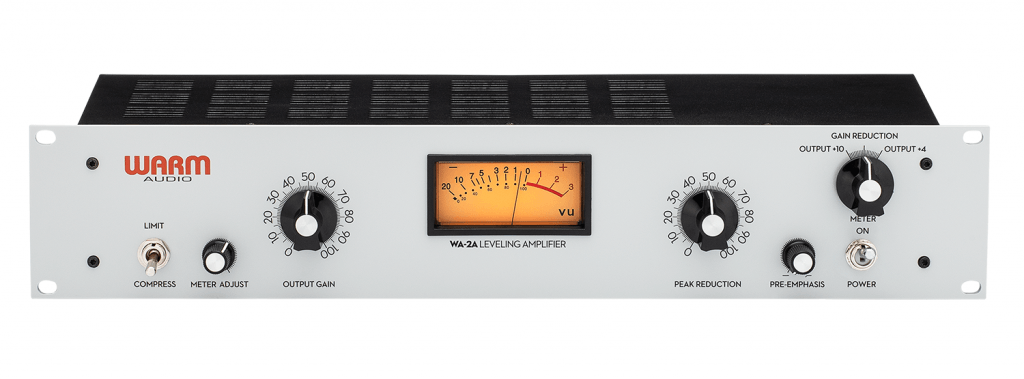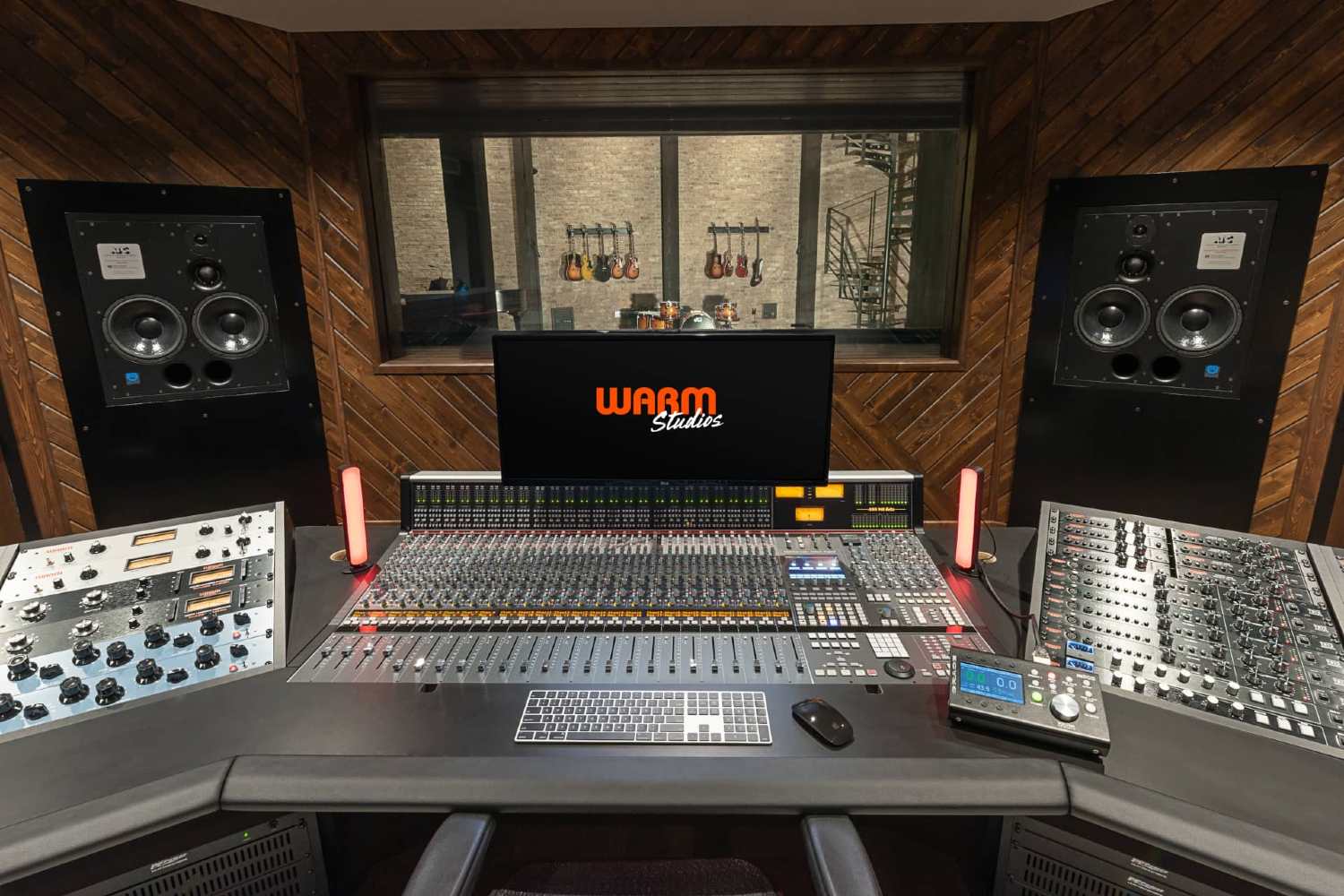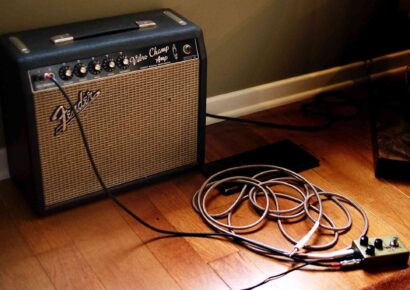While the sound quality of ITB recording has come a long way in recent years, few would argue against the rich authenticity and purity of tone that can be found in the hardware domain
Even with all the emulations out there, the tonal clarity, colour, and depth of analogue audio processing can be difficult to surpass. Consequently, a lot of commercial releases are still mixed through analogue consoles, or at least utilising a good deal of analogue processing. All of this is good and well in theory, but vintage, analogue equipment doesn’t come cheap; and here enters the mission of Warm Audio.
At the front end, working out of the box bears a passing similarity to in-the-box workflows – at least at the tracking stage. It still begins with capturing the performance with a microphone, though it is the signal chain after this point that differs. Regardless of how you are working, the importance of microphones cannot be stressed enough and thanks to some major advancements in microphone manufacturing, high quality microphones have never been more accessible.
Read all the latest features, interviews and how-to columns here.
The WA-8000 or the WA-47 tube condenser microphones from Warm Audio are a great example of affordable, studio-quality microphones that are the perfect starting point for your journey into critical audio.
Beyond just the microphones, the traditional out-of-the-box workflow usually involves a processing chain that utilises high quality preamplifiers, combined with inline compression and EQ on the way in, before being committed to disk or tape. While your interface may come with decent enough preamps and your DAW might be loaded with a whole manner of plugin EQs and compressors, the quality that can be found in a standalone rack unit or channel strip is often nothing short of revelatory. It’s with the addition of these premium circuits into the signal chain and the presence of things like tubes, quality transistors, and resistors/capacitors that the magic of analogue audio lies.
The addition of some analogue warmth and saturation into the mix can certainly enhance and mould our audio in desirable ways, particularly when it comes to central elements of the production like vocal processing. Again, Warm Audio’s product range features some fantastic examples of affordable outboard audio processing that won’t break the bank.
WA73 single channel
The WA73 single channel preamplifier is an awesome example of a classic transistor preamp that is very useful for adding analogue saturation into the capture signal chain, enhancing the overall result, particularly on voice and drums. This is probably one of the most crucial aspects of incorporating some out-of-the-box processing into your workflow. Introducing analogue circuitry early on, through the use of quality preamps is just as an important part of the process as anything happening at mix.
Assuming that you are recording to digital, a high quality interface is required (preferably one with bypassable pres, balanced inserts, and excellent analogue to digital converters). In this regard the Audient iD44 audio interface is an awesome small footprint option. Once we’ve jumped into the world of binary, it’s all about exploiting the wonders of ITB editing, before integrating hardware inserts into our mix chain. For many, this is really where the fun begins.
In this type of mixing workflow, the line level output of the audio interface is generally sent back into the interface via the hardware inserts. Equalisation is applied to the individual track either via plugin or external EQ, though there are multiple workflows that can be incorporated depending on available resources or workflow preferences. The very nature of analogue audio means that often, once summed, the resulting mix can come out sounding more cohesive and full, just by virtue of having travelled through a recording console or interface. Alternatively, tracks can also be made to stand out, simply by running them through different processing chains and outboard audio devices like compressors, EQs, and reverb/delay/modulation devices. If working with an audio desk, then audio can be sent out and returned to an individual channel for processing via insert points.
After EQ, the most heavily used piece of equipment is without doubt the compressor, and in this regard something like the WA-76 or the WA-2A single channel optical compressor are an awesome place to start.

These can normally be assigned digitally, integrating with your DAW of choice, however if the production doesn’t have access to a DAW with this sort of routing capability, then it is possible to send individual tracks out of the interface into the outboard gear, then back through the onboard preamps, however this does incur another A/D conversion. If external effects units are being utilised in the DAW-based workflow, it’s always best to have them set up via auxiliary buses to the device, then returned to the main mix via auxiliary returns.
The final part of the signal chain is concerned with broadband processing across our stereo bus outputs. It is often preferable to insert a stereo bus compressor (like the Warm Audio Buscomp 2) over this main output, adding further cohesion and overall level control to our stereo mix.
Now all of this is moot if our room and listening environment can’t be trusted, so before we even lay a finger on a threshold control or Q parameter, it’s important to get our monitoring to at least a passable level. Good monitoring also allows you to make valid judgements about your signal chain, with the ability to run A/B listening comparisons in a more controlled and bipartisan manner (which is particularly handy for these kinds of ITB vs OTB debates).
On top of some subjective differences in audio quality, out-of-the-box processing does have one other feature that’s very hard to replicate authentically in the digital world – that is the tactile feel of engaging with dedicated hardware devices, touching the controls and intuitively engaging with the process of refining your mix. That kind of feel, combined with the obvious sonic flavour at the capture and mix stage, is worth the price of entry alone.
For local Warm Audio enquiries, reach out to Studio Connections.

